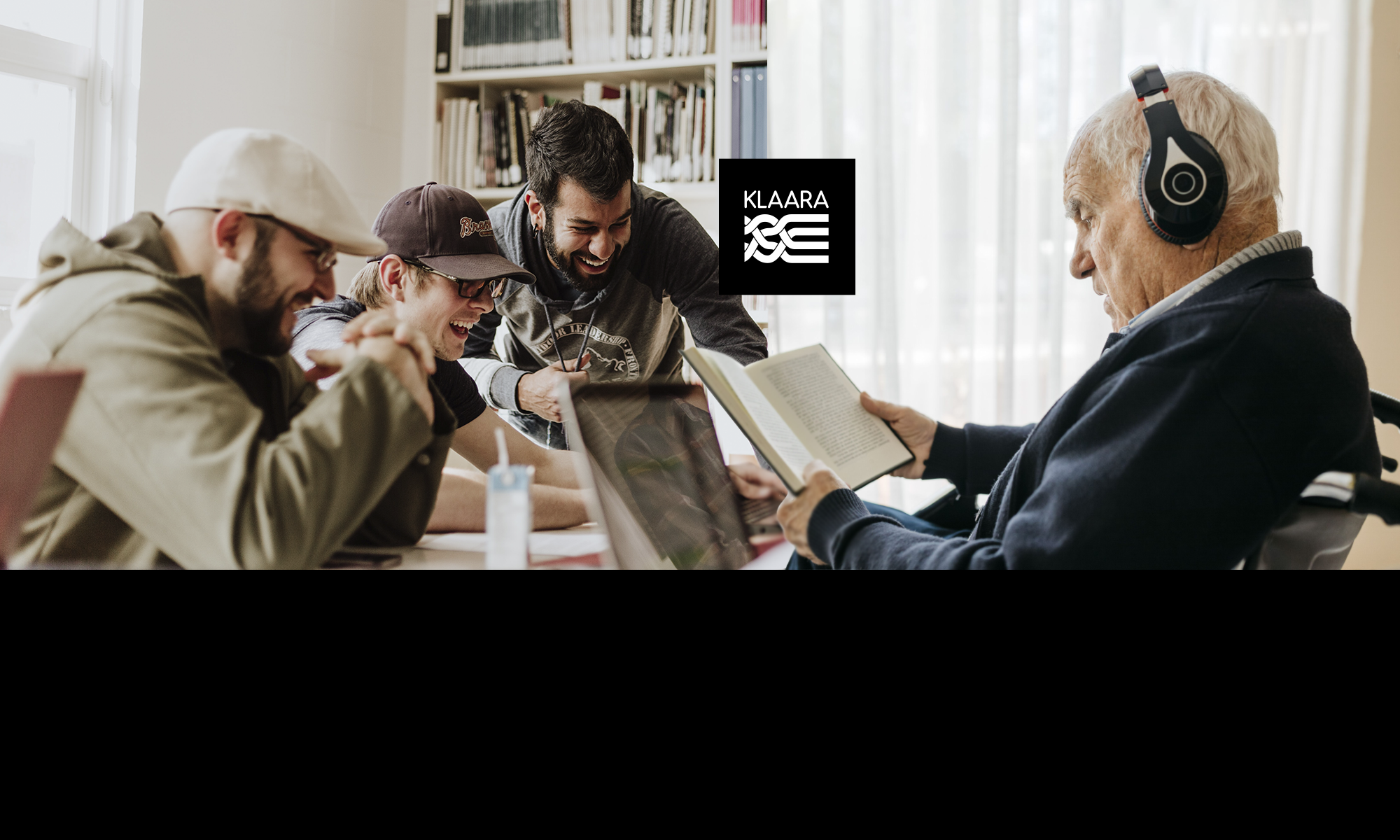Although we know that that long and rare or unfamiliar words can make reading more difficult, and guidelines for Easy Language advise writers to use frequent and short words, we have limited information on the effects of these word characteristics on Swedish-speaking readers in the Easy Language target group. This blog text briefly describes an eye-tracking study that investigated the reading of Easy Language texts on readers in a day centre for people with intellectual disabilities.
Although Easy Language is an internationally growing research field (e.g., Lindholm & Vanhatalo 2021), research on Easy Swedish has been more limited (e.g., Arle & Frondén 2022). In the quest of evaluating the effectiveness of the rules for Easy Language, eye-tracking methodology has become increasingly popular among researchers, especially in the German linguistic context (see, for example, Deilen 2021; Gutermuth 2020). In my doctoral research project, in co-operation with Johanna Kaakinen, I have used eye-tracking methodology to study effects of word length, frequency, word repetition, and abstractness on readers with intellectual disability when reading Easy Language texts written by public authorities. In this blog text, I briefly describe some of my findings and share some practical experiences from my eye-tracking experiments. The results have been published in the article Reading Easy Language Texts Written by Public Authorities: Evidence from Eye Tracking in Finnish Journal of Linguistics (Frondén & Kaakinen 2023).
Guidelines for Easy Swedish state writers should use short and frequent words, and repeat words instead of using synonyms (e.g., MTM; LL-Center). Although previous research has shown that word length, frequency and word repetition influence word reading times (eg., Rayner 1998; 2008), some of the guidelines for Easy Language have been shown to be based on misinterpreted, simplified, or outdated research (Wengelin 2015). Furthermore, research focusing on effects of word length, frequency and word repetition among adult readers in the Easy Swedish target group has been lacking.
In 2021, we carried out an eye-tracking study that studied the reading of Easy Language texts written by public authorities, focusing on the effects of word length, frequency, and word repetition on a small group of readers in a day centre for people with intellectual disabilities. The eleven readers that participated in the study were all native speakers of Swedish, living in Finland. The control group consisted of eight university students, also native speakers of Swedish.
As expected, the results of the study showed significant effects for both word length and frequency in all readers. Interestingly, these effects were also significantly greater in the group at the day centre for people with intellectual disabilities than in the control group, which adds validity to the related Easy Language guidelines for this group of readers. The effects for word repetition were not as clear; it affected reading only partly. During the experiment, follow-up free-recall questions were used to check how much the participants remembered of the texts directly after reading it. The texts were seemingly too difficult for the readers at the day centre – they were not able to reproduce the main contents of the texts.
As the group in this research study was small, more research is needed to examine the effects of these word-level text characteristics in this group of readers. However, this pilot study offers a valuable asset to the evaluation of Easy Language guidelines and an entry point to the study of text characterstics’ effects on readers in the Swedish Easy Language target group.
Carina Frondén
Doctoral Researcher, Scandinavian Languages, University of Helsinki
References:
Arle, Solveig & Frondén, Carina. 2022. Bringing order to chaos: Research on Easy Swedish. Journal of Nordic Linguistics 45(2). 167–193. https://doi.org/10.1017/S0332586522000105
Deilen, Silvana. 2021. Optische Gliederung von Komposita in Leichter Sprache: Blickbewegungsstudien zum Einfluss visueller, morphologischer und semantischer Faktoren auf die Verarbeitung deutscher Substantivkomposita. Berlin: Frank & Timme. (Doctoral Dissertation).
Frondén, Carina & Kaakinen, Johanna K. 2023. Reading Easy Language texts written by public authorities: Evidence from eye tracking. Finnish Journal of Linguistics, 36, 7–36. https://doi.org/10.61197/fjl.126062
Gutermuth, Silke. 2020. Leichte Sprache für alle?: Eine zielgruppenorientierte Rezeptionsstudie zu Leichter und Einfacher Sprache. Berlin: Frank & Timme. (Doctoral Dissertation).
Lindholm, Camilla & Vanhatalo, Ulla. 2021. Introduction. In Lindholm, Camilla & Vanhatalo, Ulla (eds.), Handbook of Easy Languages in Europe,. 11–26. Berlin: Frank & Timme.
LL-Center. Om lätt språk och lättläst. (www.ll-center.fi/svenska/om_lattlast/om_lattlast2/) (Accessed 2021-04-27).
Myndigheten för tillgängliga medier (MTM). Att skriva lättläst. (https://www.mtm.se/var-verksamhet/lattlast/att-skriva-lattlast/) (Accessed 2021-03-08).
Wengelin, Åsa. 2015. Mot en evidensbaserad språkvård? En kritisk granskning av några svenska klarspråksråd i ljuset av forskning om läsbarhet och språkbearbetning. Sakprosa 7(2). https://doi.org/10.5617/sakprosa.983
